North Korean air defense system: military anti-aircraft missile systems
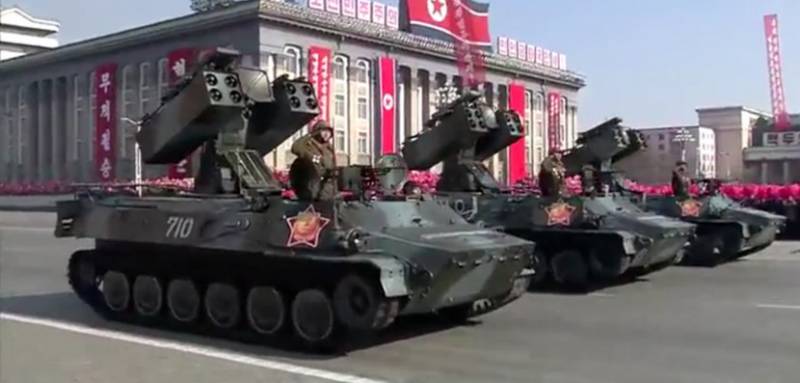
According to Western estimates, the strength of the DPRK Ground Forces is about 1 million people. About 180 more serve in the Air Force and the Navy. In addition to the on-site air defense systems and anti-aircraft artillery installations, which were considered in previous publications of the series devoted to the air defense of the DPRK, the troops have a significant number of short-range anti-aircraft missile systems designed to directly protect units and objects from air attack weapons operating at low altitudes.
Historically, North Korea, unlike other allies of the USSR, was not supplied with mobile short and medium-range air defense systems with radio command and radar guidance of missiles, equipped with their own radar detection tools: "Osa", "Cube" and "Circle" - capable of cover troops at night and in conditions of poor visibility. This was due to the fact that in the 1960s-1980s relations between the USSR and the PRC were openly hostile and the Soviet leadership, knowing about the close economic, ideological and military ties between Pyongyang and Beijing, feared the leakage of important technical secrets and the appearance of Chinese clones of Soviet systems. air defense.
It must be said that such fears were quite justified after active export of Russian oil began in the 1990s. weapons in China, "Chinese" air defense systems and fighters soon appeared, in which the features of the S-300P and Su-27 were clearly visible.
In the 1970s-1990s, the command of the North Korean army, deprived of access to self-propelled air defense systems equipped with their own means of detecting air targets, relied on the mass saturation of troops with man-portable anti-aircraft missile systems that used missiles induced by thermal radiation aviation engines.
At present, for direct cover of ground units, along with anti-aircraft artillery, complexes of the near zone of Soviet and Chinese production, as well as their copies produced in North Korea, are used. Relatively recently, mobile air defense systems have been created and put into service, which are very similar to the Soviet military air defense systems Strela-10 and Tor.
Man-portable air defense systems
During the Cold War, the Strela-2M was the most common portable anti-aircraft missile system in the allied countries of the USSR.
This complex, adopted by the Soviet army in 1970, is a modernized version of the Strela-2 MANPADS. The main difference from the earlier modification was a slight increase in noise immunity against a cloudy background, an increase in the zone of destruction of jet aircraft on catch-up courses, and the possibility of firing helicopters and aircraft with piston engines on a collision course.

Starting device MANPADS "Strela-2M" assembly and anti-aircraft missile
MANPADS "Strela-2M" could hit targets flying at subsonic speeds at ranges up to 4 m. The maximum reach in height is 200 m. The minimum height is 2 m. The weight of the complex in combat position is 300 kg. Length - 50 15 mm. Rocket diameter - 1 mm. The launch weight of the rocket is 490 kg. The warhead weighing 72 kg is equipped with 9,8 g of powerful explosives.
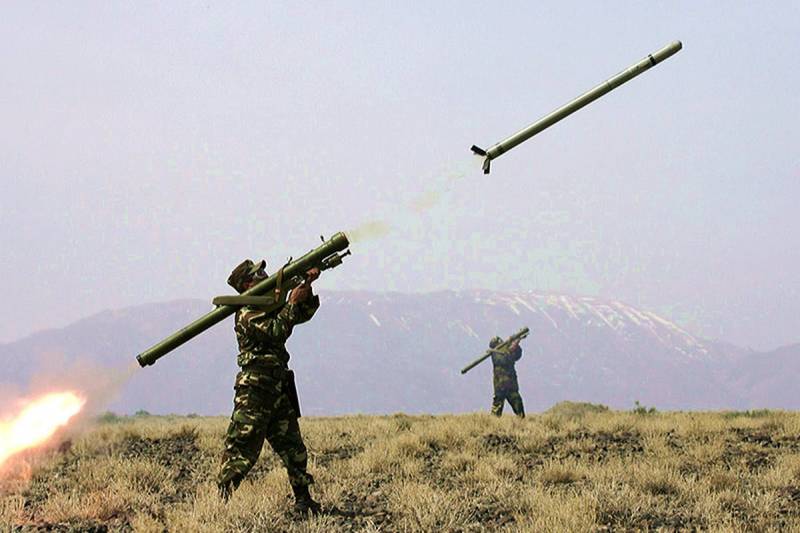
The portable complex "Strela-2M" significantly increased the anti-aircraft potential of the units of the battalion level of the ground forces. If necessary, shooting can be carried out from the body of a car, from the armor of an infantry fighting vehicle or armored personnel carrier moving at speeds up to 20 km / h.
At the same time, the first mass MANPADS had a number of significant drawbacks.
Due to the low sensitivity of the GOS, a frontal attack by jet combat aircraft of the enemy was impossible. The probability of hitting a target in the presence of low cumulus clouds illuminated by the sun was sharply reduced. When firing at a target flying at a height of less than 50 m, it was possible to point the missile at heat sources on the ground.
The minimum angle in the sun, at which it was possible to track air targets with a homing head, was 25–40 °. The homing head was not protected from heat traps fired by aircraft and helicopters.
From the experience of combat use in local conflicts, it is known that even well-trained shooters, when repelling air raids, having launched 10 missiles, on average shot down 1-2 enemy aircraft or helicopters. If the enemy used heat traps, then the effectiveness of shooting decreased by about three times.
However, even such a result for a portable complex of the first generation is considered quite satisfactory. Knowing about the presence of MANPADS, the air enemy is forced to use special maneuvers and technical countermeasures, as well as limit the time spent in the target area and the number of combat visits. Although the probability of hitting air targets with this anti-aircraft missile is relatively low, the Strela-2M MANPADS were taken in large numbers, and they were well mastered by the troops.
MANPADS "Strela-2M" is now considered obsolete, but with mass use, especially when several launches are made on the same target, this complex is still capable of posing a great danger to combat aircraft and helicopters.
The same age as Strela-2M, the American FIM-43 Redeye was inferior in terms of combat capabilities to the Soviet MANPADS. The Redai portable complex, which was in service with the American contingent and the South Korean army, could only hit aircraft in the rear hemisphere. The optical sight had a narrow viewing angle, and this made it difficult to search for fast-moving targets, the GOS had low noise immunity, which made it possible to almost guarantee the removal of missiles from the combat course with the help of fired heat traps.
The battery had a short operating time, as a result, inexperienced operators did not always have time to get into the interval between the detection of an air target and the launch of a missile. In the course of real use, the low reliability of the contact fuse was revealed, which, combined with a weak warhead, reduced the already low probability of defeat.
Deliveries of Strela-2M to North Korea began in 1978. By that time, Chinese intelligence had already obtained full-scale samples of the Soviet MANPADS in Vietnam. American and Israeli specialists received at their disposal several portable Soviet complexes from among those transferred to Egypt.
The exact number of Strela-2M MANPADS delivered to the DPRK is unknown. South Korean sources claim that it could be 2 launchers and 000 anti-aircraft missiles.
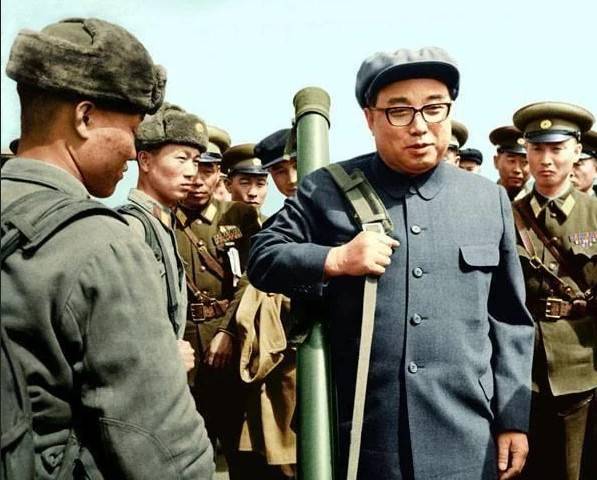
There is information that in North Korea until 1988, the Strela-2M MANPADS were assembled. Most of the components were supplied from the USSR, but some elements, such as disposable batteries used in the process of target acquisition and missile launch, were produced locally.
In the first half of the 1980s, Pyongyang received several dozen ready-made Strela-3 MANPADS, a package of technical documentation and components for setting up the production of this portable system on its own territory.

MANPADS "Strela-3"
The main difference between the Strela-3 MANPADS and the Strela-2M MANPADS is the best noise immunity. A significant improvement in the combat characteristics of the Strela-3 MANPADS with maximum unification with the Strela-2M was achieved mainly due to the use of a fundamentally new seeker, cooled to a temperature of -200 °.
The mass of the Strela-3 MANPADS in comparison with the Strela-2M in the combat position increased by 1 kg, but at the same time the combat characteristics were significantly improved. Launch range increased from 4 to 200 m. Altitude reach from 4 to 500 m. The portable system could now hit targets flying at an altitude of up to 2 m. It became possible to attack jet aircraft on a head-on course. A trigger mechanism was also introduced, which made it possible to automatically launch a missile at a target located in the launch zone when firing head-on.
In parallel with the supply of Soviet man-portable systems and their assembly at their own production facilities, in the period from 1980 to 1993, China transferred 4 HN-500A MANPADS. In fact, the HN-5A is a slightly improved version of the Strela-5M MANPADS. With the same rocket caliber - 2 mm, the Chinese complex weighed 72 kg. The maximum firing range was 16 m, the reach in height was 4 m.
In 1997, Russia handed over to the DPRK documentation and components for the assembly of 1 MANPADS of the Igla-500E export modification.

MANPADS "Igla-1"
The anti-aircraft missile of the new complex used the homing head from Strela-3, but the missile and launcher were new. The mass of the complex has increased, in the combat position, the Igla-1E MANPADS weighs 17,8 kg, in the stowed position - 19,7 kg. The maximum firing range is 5 m. The upper limit of the affected area is 000 m. The minimum target flight height is 3 m. The maximum speeds of fired targets and the probability of hitting have increased.
This was achieved through the introduction of an additional scheme and miniature jet engines that ensure the turn of the missile defense system to a preemptive meeting point with a target in the initial flight segment. Also on the launcher appeared an electronic mode switch "in pursuit - towards". The missile warhead was equipped with an additional non-contact fuse, which ensures that the target is hit with a small miss.
In the 16st century, its own portable complex HT-XNUMXPGJ (also known as Hwa'Seong Chong) was created and is being mass-produced.
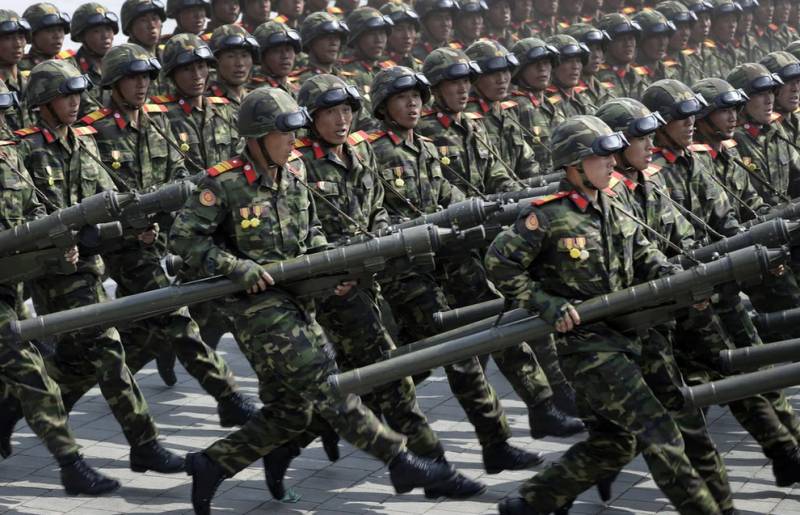
North Korean military personnel with HT-16PGJ MANPADS on parade
It is generally accepted that the HT-16PGJ MANPADS is a conglomerate of technical solutions borrowed from the Soviet Igla-1 MANPADS and the Chinese QW-2. It is stated that the HT-16PGJ is superior in its capabilities to the Igloo-1.
A rocket with a diameter of 72 mm and a length of about 1 mm is placed in a launch tube 500 mm long. The mass of the equipped complex is about 1 kg. SAM with a launch weight of 520 kg carries a high-explosive fragmentation warhead weighing 18 kg, equipped with 11,5 g of explosive.
The firing range is from 500 meters to 5 m, the minimum height of the fired targets is 500 m, the maximum height is 10 m. The maximum target speed is 3 m/s. The cooled dual-spectrum seeker provides the ability to deal with air targets on a collision and overtaking course in the conditions of the use of artificial thermal interference.
The armed forces of North Korea are quite densely saturated with portable anti-aircraft missile systems, which, together with anti-aircraft artillery and machine gun installations, form the basis of military air defense. Foreign reference publications claim that the DPRK has at least 10 launchers for the Strela-000M, Strela-2, HN-3A, Igla-5E and HT-1PGJ MANPADS.
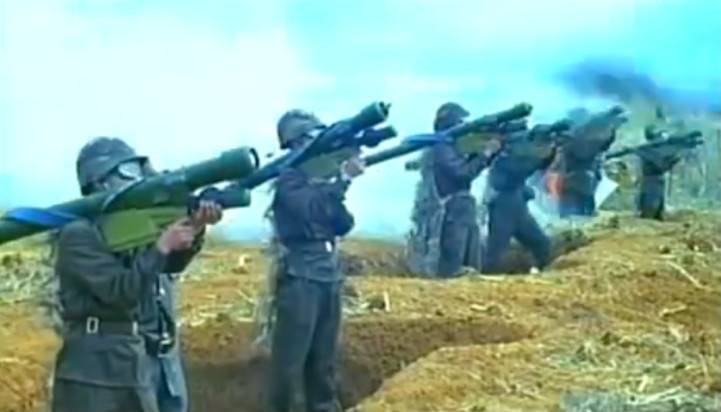
Due to the shortage of full-fledged self-propelled military anti-aircraft missile systems, in the North Korean army, portable systems are massively mounted on various tracked and wheeled vehicles.
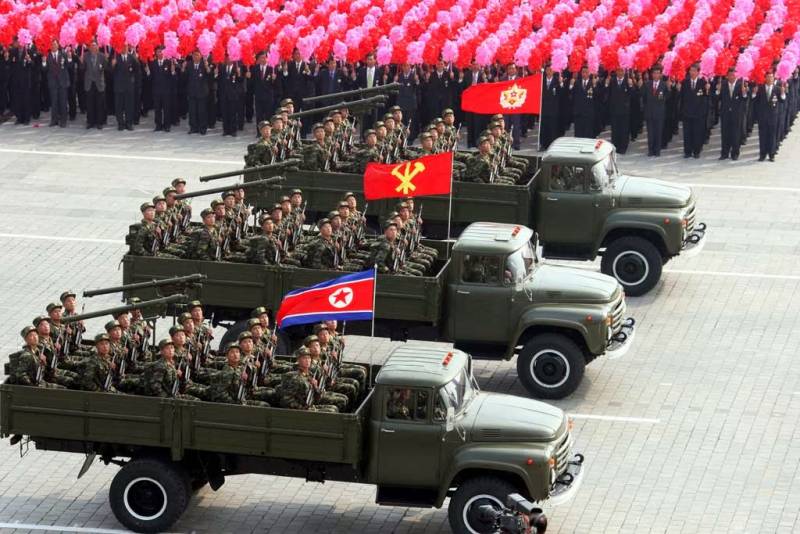
The most common chassis for MANPADS are ZIL-130 and Taepaeksan-70 trucks. There is a combined machine gun-rocket self-propelled anti-aircraft gun, on which a 14,5-mm Type 56 quadruple ZPU is located next to the HT-16PGJ MANPADS launcher.
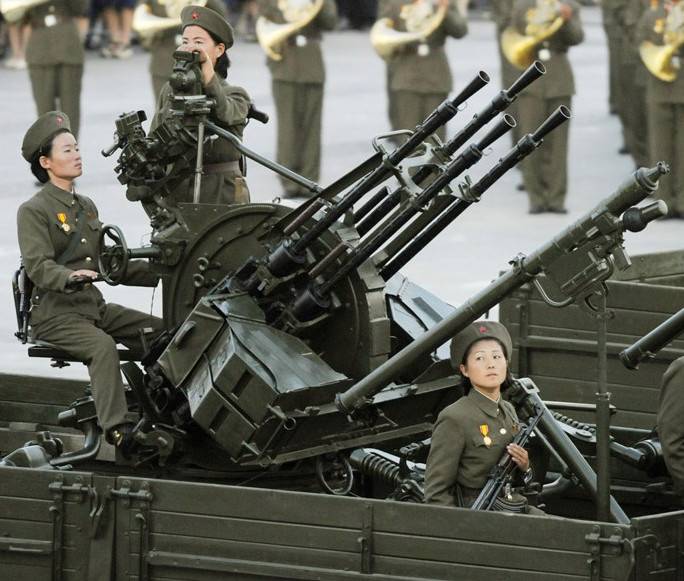
Very often, MANPADS launchers as additional weapons are mounted on various armored vehicles: armored personnel carriers, tanks and even self-propelled artillery mounts.
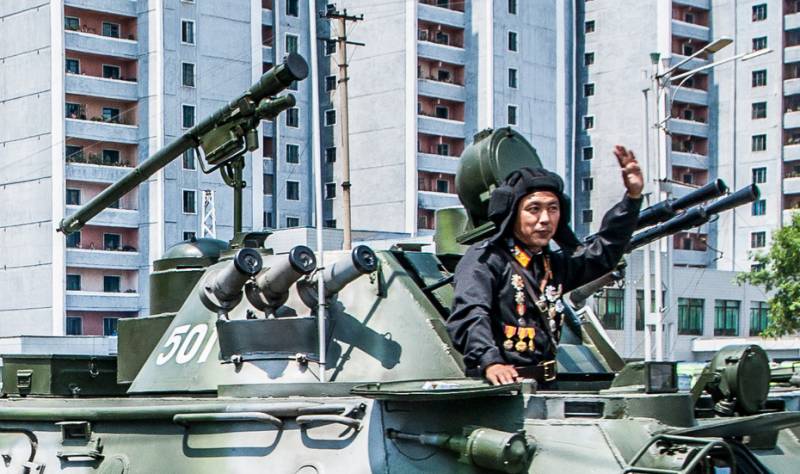
At military parades, tanks of the Chonma family were repeatedly demonstrated, on the towers of which there were launch tubes for anti-aircraft missiles in the near zone.
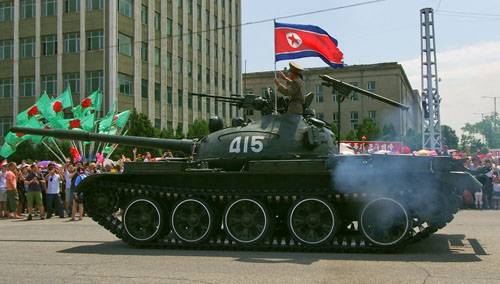
On the latest models, anti-aircraft missiles can be used without leaving the reserved space, for which the twin launchers are equipped with a remote-controlled electric drive and a television camera.
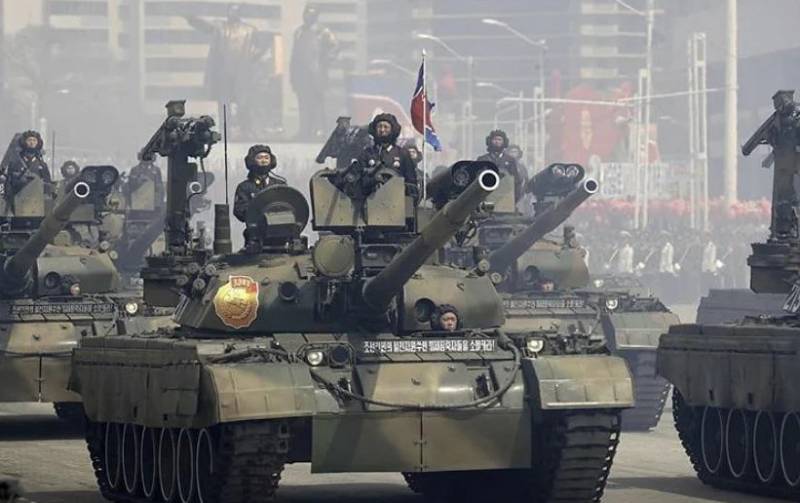
The Chonma-216 tank is called the "combine of death". This vehicle, in addition to the typical weapons for a medium tank - cannons and machine guns, also has two automatic grenade launchers, two Bulsae-3 anti-tank missiles and two HT-16PGJ SAM launchers.
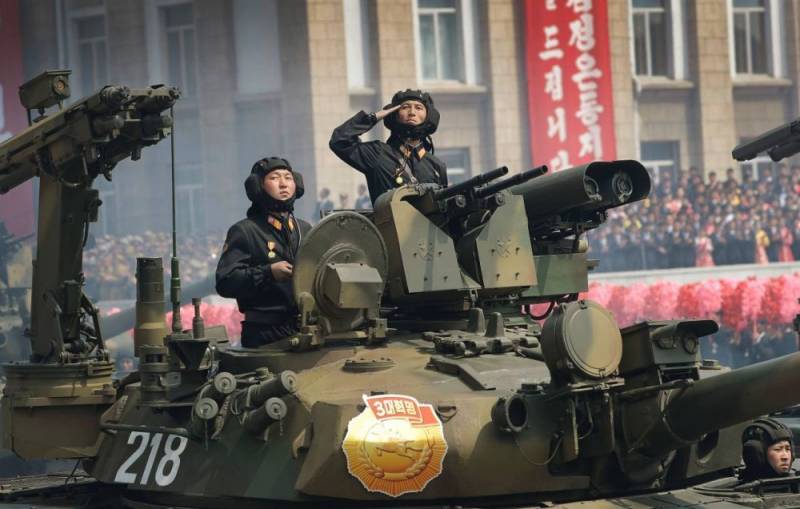
Such unprecedentedly powerful, diverse, “unparalleled” weapons are designed to increase the firepower of the tank, created on the basis of the Soviet T-62, and provide the ability to deal with various ground and air targets.
However, in practice, attaching weapons that are very vulnerable to bullets and shrapnel to an assault armored vehicle does not make much sense. It is unlikely that the crew will be able to equally successfully use all this numerous arsenal. By and large, this only leads to an increase in the cost of the tank, and also complicates its operation and maintenance.
Self-propelled anti-aircraft missile systems of military air defense
A number of sources mention that the North Korean army is armed with mobile air defense systems "Cube" or even "Buk". However, it was not possible to confirm this; such Soviet-made complexes have never been demonstrated at military parades or on DPRK television.
The creation of their own self-propelled military air defense systems began in North Korea relatively recently. In April 2017, at a parade in Pyongyang in honor of the 105th anniversary of the birth of the Eternal President of the DPRK, Kim Il Sung, a short-range air defense system, very similar to the Soviet Strela-10, was demonstrated.
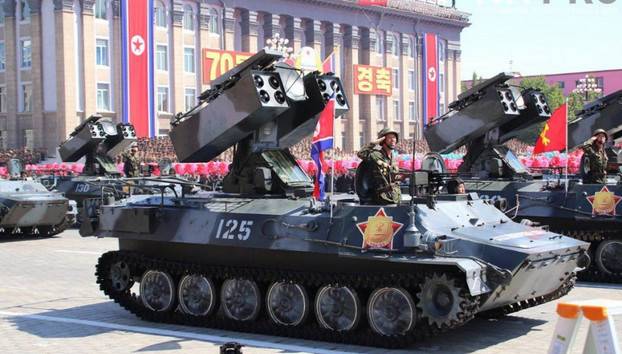
The North Korean complex also uses the MT-LB universal tracked chassis. Unlike combat vehicles of the Strela-10 family, on which four anti-aircraft missiles are placed in transport and launch containers, the North Korean complex carries eight HT-16PGJ missiles.
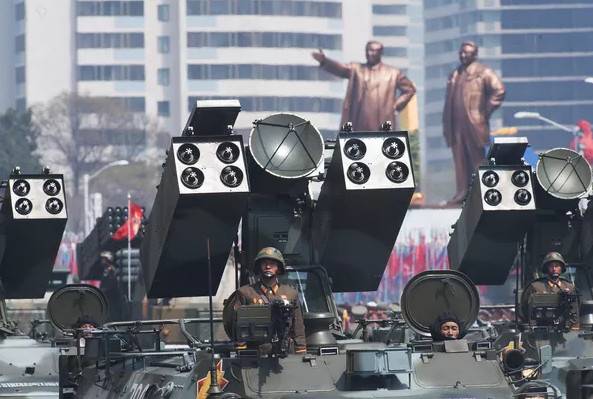
South Korean publications say that this air defense system, in addition to double the ammunition load, also has a radar rangefinder. The search for an air target, as on the Soviet Strela-10 air defense system, is carried out by the operator visually. It is possible that the sighting and search equipment includes a thermal imaging system, an automatic target acquisition and tracking machine.
Apparently, the mobility remained at the level of the base chassis. The machine, protected by bulletproof armor, is able to overcome small water obstacles. Diesel engine with a capacity of 240 liters. With. provides a self-propelled anti-aircraft gun, weighing about 12,3 tons, speed on the highway up to 60 km / h. Crew - 3 people.
On October 10, at a military parade in honor of the 75th anniversary of the Workers' Party of Korea, a new short-range complex was shown that outwardly resembles the Tor air defense system. Experts believe that the North Korean counterpart is designed to destroy a wide range of air attack weapons, as well as guided bombs and short-range ballistic missiles.

Unlike the Thor, the North Korean complex is trailer-mounted, transported by a wheeled tractor, and has a much larger surveillance radar antenna. It is possible that such a design is associated with a larger mass of the complex than that of the Russian prototype and the Chinese HQ-17 air defense system, which is also made on the basis of the Thor.
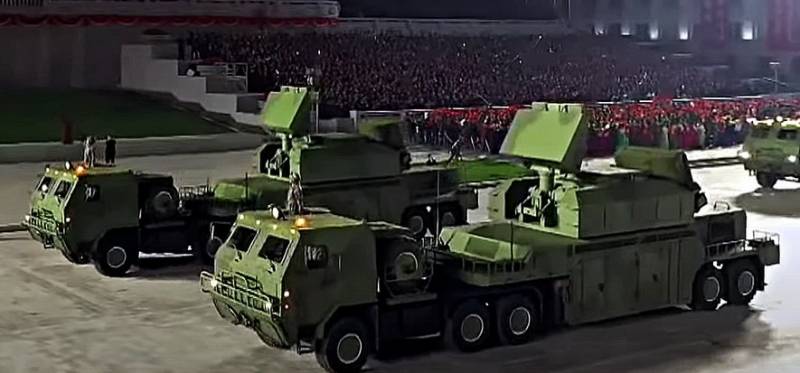
The towed variant is better suited for long-term combat duty and use in objective air defense, but has poorer maneuverability and is not capable of escorting tank and motorized rifle units. It is possible that a modification intended for testing is shown at the parade, and later a similar complex on a tracked chassis will appear.
Information